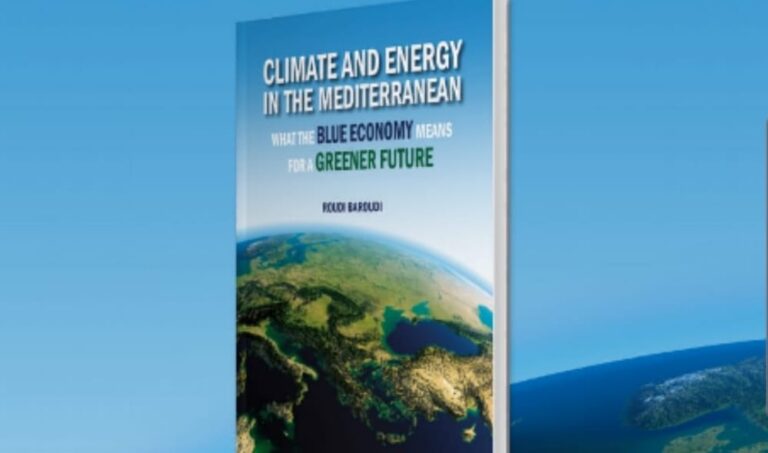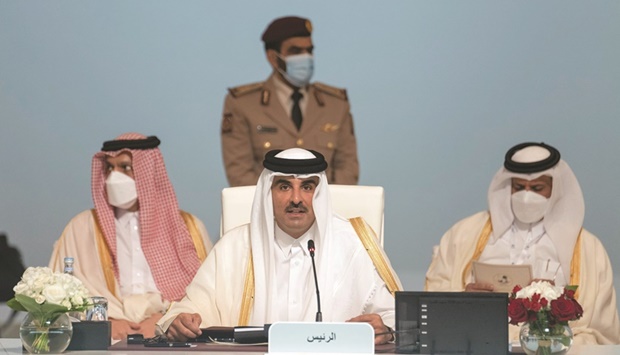رياح المتوسط تنتج طاقة تضاهي طاقة المفاعلات النووية في العالم



Global liquefied natural gas (LNG) buyers and sellers are bracing for more uncertainty over Russian supplies and an unclear demand outlook from Europe and top importer China in the run-up to the peak winter season, industry executives said.
Western sanctions on Russia due to the Ukraine invasion have disrupted Russian gas supply to Europe, sending global gas prices to all-time highs earlier this year and raising energy security concerns.
Moscow calls its action a special military operation.
In addition to unpredictable weather, it remains unclear whether there will be further cuts in Russian supplies to Europe, the executives said.
Also uncertain is whether Europe can build new LNG import infrastructure in time to replace massive Russian volumes, they added.
One more question is when China will lift its Covid restrictions, which have slashed imports in the first five months of this year.
“We have massive uncertainty over what will happen next,” Steve Hill, executive vice president at Shell, said at the World Gas Conference.
“If we convert the Russian pipeline gas volume into Europe in 2021 into an LNG equivalent, and add on the LNG volumes delivered into Europe in 2021, that’s 200mn tonnes of LNG equivalent. That’s half the size of the current (global) LNG industry.”
Infrastructure constraints that have emerged as gas flows change from west to east, rather than east to west, made it “more complicated than we first thought”, he added.
Peder Bjorland, vice president natural gas marketing and trading at Equinor, said the changing flows have created a “strange market” where some countries in Europe such as Britain are oversupplied, but there is no infrastructure to move the gas to demand centres like Germany.
That has created a wide price gap between the British National Balancing Point and Dutch wholesale gas prices that could incentivise infrastructure investments to reduce bottlenecks, the executives said.
But that infrastructure would take time to build, they added.
Germany is building an LNG receiving terminal and has contracted floating storage and regasification units. “It’s a race against time. We believe that the regas facilities will probably be up and running before the end of winter, but not perhaps by the start of winter. So that’s a very delicate balance,” said Michael Stoppard, global gas strategy lead at S&P Global Commodity Insights.
A severe winter in the northern hemisphere could also spark competition between Europe and Asia for LNG and push prices higher, the executives said.
“As we get into the winter…markets like Asia really start to compete for those cargoes,” Anatol Feygin, executive vice president at Cheniere Energy, said.
However, an executive with a Chinese gas importer said buyers were likely to enter this winter more prepared than last year, as European countries such as Germany and Italy have required minimum stock levels.
Buyers are increasing stockpiles ahead of winter, underpinning Asian spot LNG prices at nearly three times their May 2021 levels, unusually high for low-demand season in the second quarter. “It’s not as pessimistic this year, as everyone is preparing for winter,” said the executive who declined to be named due to company policy.
Woodside Energy Group’s chief executive Meg O’Neill said she expects LNG prices to remain elevated for next year as the market adjusts to supply disruptions.
Market uncertainties and price volatility have already driven buyers in Asia and Europe to seek long-term supplies.

By John Kemp
LONDON, March 14 (Reuters) – Investors cut bullish bets on oil last week as prices surged to multi-year highs, the economic outlook deteriorated, and extreme volatility made derivatives positions more expensive to maintain.
Hedge funds and other money managers sold the equivalent of 142 million barrels in the six most important petroleum-related futures and options contracts in the week to March 8.
Last week’s sales were the 11th largest out of 469 weeks since March 2013, records published by ICE Futures Europe and the U.S. Commodity Futures Trading Commission showed.
Portfolio managers sold Brent (-97 million barrels), European gas oil (-23 million), U.S. gasoline (-13 million) and U.S. diesel (-11 million) and were buyers only of NYMEX and ICE WTI (+2 million).
The selling was dominated by closure of existing bullish long positions (-114 million barrels) rather than the initiation of new bearish short ones (+28 million), consistent with a risk-reducing strategy.
Funds ended up with a net position in the six contracts of just 588 million barrels (45th percentile for all weeks since 2013) down from a peak of 761 million barrels (70th percentile) on Jan. 18.
Bullish long positions outnumbered bearish short ones by a ratio of 4.76:1 (61st percentile) down from 6.24 (80th percentile) in mid-January (Link).
In recent weeks, the record backwardation in futures prices, accelerating rise in spot prices, and increasing day-to-day volatility have been signs of a market under extreme stress and likely to reverse course.
Soaring oil prices have been part of a broader increase in the price of raw materials, manufactured items and freight charges which has raised the probability of a recession within the next 12 months.
Reflecting the deteriorating economic outlook and volatility costs, distillate positions were cut to 85 million barrels (67th percentile) last week down from a recent peak of 144 million barrels (85th percentile) five weeks earlier.
Rising volatility is also a symptom of a market becoming less liquid, with both bullish and bearish investors less willing to take on new risk exposures and instead reducing positions until trading becomes calmer.
Heightened volatility has fed through into more demands for margin from brokers and clearing houses and makes futures and options positions increasingly expensive to maintain, encouraging fund managers to trim positions.
Extreme volatility and rapidly diminishing liquidity is reminiscent of trading conditions in the second quarter of 2008 as oil prices climbed towards a record high in the first half of July before plunging.
Oil prices are caught between rising supply risks as a result of Russia’s invasion of Ukraine and the consequent sanctions on the country’s output, and growing demand risks stemming from inflation and a possible recession.
In this increasingly unstable and chaotic situation, many hedge fund managers have decided it is prudent to realise profits from previous long positions and reduce risk exposure until the balance of risks becomes clearer.
Related columns:
– Global diesel shortage raises risk of oil price spike (Reuters, March 11)
– Western economies on brink of recession as Russia sanctions escalate (Reuters, March 8)
– Hedge funds anticipate oil price spike, possible recession (Reuters, March 7)
– Global recession risks rise after Russia invades Ukraine (Reuters, March 4)
John Kemp is a Reuters market analyst. The views expressed are his own
Editing by Barbara Lewis


Opec and its allies agreed on Thursday to stick to their existing policy of monthly oil output increases despite fears that a US release from crude reserves and the new Omicron coronavirus variant would lead to a fresh oil price rout.
Benchmark Brent crude fell more than $1 after the deal was reported, before recovering some ground to trade around$70 a barrel.
It is now well below October’s three-year highs above $86 but still more than 30% up on the start of 2021.
The United States has repeatedly pushed Opec+ to accelerate output hikes as US gasoline prices soared and President Joe Biden’s approval ratings slid.
Faced with rebuffals, Washington said last week it and other consumers would release reserves.
Fearing another supply glut, sources said the Organization of the Petroleum Exporting Countries, Russia and allies, known as Opec+, considered a range of options in talks on Thursday, including pausing their January hike of 400,000 barrels per day (bpd) or increasing output by less than the monthly plan.
But any such move would have put Opec+, which includes Saudi Arabia and other US allies in the Gulf, on a collision course with Washington.
Instead, the group rolled over its existing deal to increase output in January by 400,000 bpd.
“Politics triumphs over economics. Consumer countries mounted enough pressure,” said veteran Opec observer Gary Ross. “But weaker prices now will only mean stronger later.”
Ahead of the talks, US Deputy Energy Secretary David Turk indicated there might be flexibility in the US release of reserves, telling Reuters on Wednesday that Biden’s administration could adjust the timing if oil prices dropped substantially.
Opec+ remains concerned that the Covid-19 pandemic could once again drive down demand.
Surging infections have prompted renewed restrictions in Europe and the Omicron variant has already led to new clamp downs on some international travel.
“We have to closely monitor the market to see the real effect of Omicron,” one Opec+ delegate said after the talks.
Opec+ ministers are next scheduled to meet on January 4, but the group indicated in a statement that they could meet again before then if the market situation demanded. Before this week’s talks Saudi Arabia and Russia, the biggest producers in Opec+ had both said there was no need for a knee-jerk reaction.
Commenting after the Opec+ decision, Russian Deputy Prime Minister Alexander Novak said the oil market was balanced and global oil demand was slowly rising.
Opec+ has been gradually unwinding record cuts agreed last year when demand cratered due to the pandemic, slashing output by about 10mn bpd, or 10% of global supply.
Those cuts have since been scaled back to about 3.8mn bpd.
But Opec+ has regularly failed to meet its output targets, producing about 700,000 bpd less than planned in both September and October, the International Energy Agency (IEA) says.

The Nordic region’s pace-setting push into green transport is set to extend from cars to the air-travel market.
Iceland this month signaled plans to move toward carbon-free domestic flights by the end of the decade, while Sweden’s Heart Aerospace aims to deliver an electric plane specifically designed to ply routes linking remote Scandinavian settlements within six years.

QNA/Doha

The Gas Exporting Countries Forum (GECF) has joined a growing global consensus that blue hydrogen production from natural gas, coupled with carbon capture or CCUS technologies will play a “significant” role in the world’s transition to a sustainable energy future.
This was highlighted by GECF secretary-general Yury Sentyurin at a special virtual event ‘Blue Hydrogen Strategy’, organised by it. The event made special note of the potential for enriched natural gas, which is a blend of natural gas with hydrogen.
The hydrogen economy is the use of hydrogen as a fuel, but is subject to intensive comparison, particularly between “various colours” of hydrogen. The most popular green hydrogen is obtained from renewables but is sub-scale, while the blue is produced from natural gas after pairing with carbon capture.
“Looking at the alternative of blue hydrogen, it builds on natural gas and we already have this technology in place and the network to carry this volume is in place, for example through pipelines for natural gas,” Steinar Eikaas, Equinor’s vice president for Low Carbon Solutions.
Currently, the cost of producing blue hydrogen is 50-100% above natural gas production; however the resultant fuel is completely carbon dioxide free. The cost of green hydrogen, meanwhile, is 2-5 times above blue hydrogen.
Energy experts believe that hydrogen is the next frontier as it can fill the same purpose as, for example, natural gas, and decarbonise many of the same sectors fuelled traditionally by hydrocarbons.
“When it comes to the type of hydrogen, blue hydrogen has advantages simply because the infrastructure already exists and the oil and gas industry has the investment muscle,” he said.
Giving a European example, he said the European Union’s new hydrogen strategy, announced this July, has set very aggressive target of 40 gigawatts of green hydrogen by 2030 but left another 40 gigawatts for imports, thereby leaving the opportunity for blue hydrogen to fill in the gap. According to the latest available figures from the GECF Global Gas Outlook 2050 (2020 edition), natural gas is projected to remain the fastest growing fossil fuel with a share of 28% in the global energy mix by 2050 against the current 23%. Along the way, it will play a vital role in decarbonisation options, such as the blue hydrogen.
Referring to the Global Gas Outlook 2050, the GECF Head of Energy Economics and Forecasting Department Sokolov, said the forum developed a dedicated scenario called the “Hydrogen Scenario”, the results of which suggest blue and green hydrogen to dominate the future of hydrogen production.
“According to the results of the scenario, almost half of the produced hydrogen will be sourced from natural gas by 2050, in the form of blue hydrogen. It is also forecasted that more than 10% of the total natural gas production in 2050 will be consumed by hydrogen,” he added.

Le Transatlantic Leadership Network annonce la publication de Maritime Disputes in the Eastern Mediterranean : The Way Forward, de Roudi Baroudi.
La Méditerranée orientale à la croisée des chemins : Les questions énergétiques au premier plan
Jeudi 11 juin 2020 9 H 30 – 11 H 00 EST
Avec la participation de : Dr. Roudi Baroudi, directeur général, Energy & Environment Holding ; Jonathan Moore, U.S. Department of State ; Senior Bureau Official/Principal Deputy Assistant Secretary, Bureau of Oceans and International Environmental and Scientific Affairs ; Kurt Donnelly, U.S. Department of State. Deputy Assistant Secretary for Energy Diplomacy, Bureau of Energy Resources. Sous-secrétaire adjoint pour la diplomatie énergétique, Bureau des ressources énergétiques.
Remarques préliminaires : John B. Craig, Ambassadeur, Senior Fellow, Transatlantic Leadership Network.
Modéré par : Debra Cagan, Distinguished Energy Fellow, Transatlantic Leadership Network
« Un commentaire d’expert et un travail de fond ».
John B. Craig, ambassadeur, ancien assistant spécial du président George W. Bush pour la lutte contre le terrorisme, et ancien ambassadeur des États-Unis à Oman
« Baroudi plaide avec force pour un compromis afin que les États de la région puissent dépasser leurs différends coûteux et récolter les bénéfices de la coopération. L’approche de M. Baroudi a beaucoup à nous apprendre et, espérons-le, contribuera à des progrès pacifiques, si seulement les parties adverses l’écoutent ».
Andrew Novo, professeur associé d’études stratégiques à l’Université de la défense nationale
« …Les pays de la région, ainsi que les États-Unis et l’Union européenne, devraient adopter l’approche de Baroudi pour réduire les tensions et profiter des avantages de cette manne d’énergie ».
Douglas Hengel, maître de conférences dans le cadre du programme sur l’énergie, les ressources et l’environnement de l’université Johns Hopkins, SAIS et chercheur au German Marshall Fund
À propos de l’auteur
Roudi Baroudi a 40 ans d’expérience dans les domaines du pétrole et du gaz, de la pétrochimie, de l’électricité, de la réforme du secteur de l’énergie, de la sécurité énergétique, de l’environnement, des mécanismes de commerce du carbone, de la privatisation et des infrastructures. Ses avis sur ces questions et d’autres questions connexes sont fréquemment sollicités par des entreprises locales et internationales, des gouvernements et des médias.

If oil has been laid low by the coronavirus, then the nations whose economies most depend on it might soon be on ventilators. By any prognosis the great oil price collapse of 2020 has pushed the world’s most volatile commodity into Code Blue.
No one expects oil, its peddlers or consumers to emerge wealthier or wiser from this crisis. Oil company bankruptcies, already happening before the pandemic, will escalate. And more petro states will begin to stumble, like Venezuela, down the rabbit hole of collapse.
The pandemic, combined with suicidal overproduction and a brief price war between Russia and Saudi Arabia, has reduced oil consumption and revenues on a scale that is mindboggling.
Prior to the pandemic, the world gulped about 100 million barrels a day, filling the atmosphere with destabilizing carbon. Today it sips somewhere between 65 million and 80 million barrels.
At least 20 to 30 per cent of global demand has vanished and nearly two dozen petro-producing countries including Canada have agreed to withhold nearly 10 million barrels from the market. Few expect this agreement will stop the price bleeding.
In fact, the price of Western Canadian Select or diluted bitumen remains below five dollars a barrel — cheaper than hand sanitizer. That’s a drop of more than 80 per cent compared to the month before.
Because the spending of oil fertilizes economic growth and expands national GDPs, most of the world’s economists now predict a long depression after the pandemic.
A depression, by definition, means less energy spending, which translates into ongoing low energy prices that already no longer cover the cost of extraction in many places.
And what happens if the pandemic comes in three waves like the deadly Spanish flu of 1918?
The patient was already sick
Art Berman, one of North America’s most astute and consistently reliable oil analysts, admits the pandemic is compounding the problems of an industry and global economy already in waning health.
“Energy is the economy, and oil is the largest and most productive part of world energy. The global economy has been dying of accumulated debt for 50 years. Coronavirus has sent it to the intensive care unit.
“If the economic patient survives the ICU, it will need a long period of recovery and therapy before returning to its previous life.”
Wood Mackenzie, the British consultancy, now estimates that 10 per cent of global oil production is uneconomic insanity at prices below $25 a barrel.
Heavy oil of the sort Canada produces requires extensive upgrading and pricey transportation costs. It’s always the first to feel the pinch of any volatility because of its high cost — about $45 a barrel.
In comparison, the petro states of Russia and Saudi Arabia can pour oil into the marketplace for less than $10 a barrel — though as the brief price war attested, not for long. Saudi Arabia actually needs $80 a barrel oil to balance its budget, which like every typical petro state, it is not doing.
The fading dream of Canada as petro-power
Canada, the world’s fourth largest oil exporter, banked its destiny on the export of low-grade bitumen with no strategic risk planning. As a result it will experience huge economic losses and roller-coaster volatility for its currency.
Alberta promoted over-production and pressed for new pipelines to carry the increased flow. Now, as global demand plummets, it can no longer fill the pipelines it has.
Rystad Energy, the proficient Norwegian-based analyst, has already noted that of all the world’s oil producers, Canada will be “the most affected so far.” Lacking buyers at a suitable price, it will produce well below its capabilities this year, “shutting in” nearly 1.1 million barrels per day.
Investment in the oilsands, which reached highs of $30 billion in 2014, has now dropped to below $6 billion this year. In addition, Canadian oil and gas companies have further trimmed their spending by more than $10 billion.
The U.S.-based IHS Markit, another big data firm, describes the price collapse as “unprecedented” and says “the impact on the basin is expected to be protracted” with “long lasting ramifications” for the region.
Canada’s six largest banks, which loaned $58.8 billion to the Canada’s overleveraged oil industry in 2019 — a 59 per cent increase in the last five years — might quietly be panicking in board rooms at an appropriate physical distance.
Robyn Allan is an independent economist who before the pandemic and oil price wars persistently challenged the economics touted to support the Trans Mountain pipeline. She foresees much trouble ahead for the industry.
“After this crisis, things will not return to where they were. All economic activity is affected by the virus outbreak. And just like some people who catch it and move from home to hospital to ICU because of weak systems or pre-existing conditions, the tarsands were already an aging and compromised activity that was on the downside of its life cycle. Big Oil in Canada was going to be hard hit without COVID-19. With it, many companies are going to go under — and go under quickly.”
Allan says the trend lines will sharpen the choices Canada’s political leaders must make. “As long as government continues to pander to the needs of Big Oil at the expense of the needs of society and the environment, it will spend money unwisely.”
‘Gasmaggedon’ hits BC
Natural gas, whose price is often tied to oil, is another sick patient on oxygen. Many analysts refer to that fuel’s price collapse as “gasmaggedon.”
A global glut plunged prices to record lows last year, and now the pandemic has lowered them again. A succession of warm winters has flattened the demand for gas heating, which just adds to the economic storm.
Rystad Energy predicts that if low prices persist — and most forecasts suggest low prices for years — “nearly 42 per cent of Australia’s gas resources would be rendered uneconomic — a scary thought to the world’s largest gas exporter.”
Such prospects must weigh heavily on B.C. Premier John Horgan. His government has actively subsidized the province’s faltering fracking industry, along with Shell’s LNG Canada terminal.
His province’s billion-dollar subsidies include the construction of the Site C dam to provide cheap electricity to the LNG industry. Horgan and his predecessor Christy Clark promised that an LNG windfall of revenue and jobs would justify the low royalties, loosened environmental restrictions, strained First Nations relations and gambled taxpayer money on the emerging export industry.
Now that promise looks undeliverable, as the pandemic rocks B.C.’s economy and a healthy global LNG market recedes from view.
Fracked oil’s business model ‘does not work’
By any measure, the pandemic found the oil industry suffering from the financial equivalent of obesity, high blood pressure and diabetes. Already half the industry, inflated by cheap credit, was struggling with high-cost technology, chronic overproduction and low prices.
Although fracking tight oil formations in the United States turned that country into a temporary oil exporter, the artificial boom contained the seeds of its own bust.
Because fracking requires constant drilling due to rapid depletion of shale formations, most companies have spent more money than they’ve earned over the last decade. In fact, most frackers started as pure speculative plays designed to be flipped like some super-hyped stock.
Even before COVID-19 exploded in the U.S., public lenders and the Wall Street Journal repeatedly flagged the industry as unsustainable.
“By now, it should be abundantly clear that the current shale oil business model does not work — even for the very best companies in the industry,” the investment firm SailingStone Capital Partners explained in a recent letter.
The imminent deaths of ‘zombie companies’
Bankruptcies in both Alberta and Texas have been rife. Bernard F. Clark Jr., a lawyer with Haynes and Boone, explained to the Wall Street Journal on Jan. 27 why so many companies were going broke long before the virus arrived.
“They’re called zombie companies. The creditors would keep them on life support by not calling the notes and just restructuring them and extending the maturity, kicking the can down the road. Now there’s no incentive for the creditors to continue to keep those companies on life support.”
The proliferation of zombie companies, which has left Alberta with tens of billions worth of orphaned and inactive wells, reflects a systemic crisis that has been gnawing away at the industry for years.
In the 1980s, the oil and gas sector occupied 28 per cent of the Standard and Poor’s Index; today it barely accounts for 2.6 per cent. For the last decade the industry has consistently delivered poor returns in the stock market because fracked oil, like bitumen, costs more to extract and requires higher prices to pay off debt, let alone make a profit.
Most importantly, fracked oil and sulfurous bitumen deliver lower energy returns than cheap oil. Lower energy returns mean diminished financial rewards, profits, revenues and taxes.
To understand the importance of energy returns, consider what your own body needs. If you expend more energy procuring dinner than you can extract from it, then your future will likely involve rapid weight reduction or starvation.
One hundred years ago, cheap oil was easy to extract. It was, says Spanish analyst Antonio Turiel, comparable to drinking a glass of water. Today that glass is either full of abrasive sand or so empty that a complex operation to condense water from the air is required.
When civilizations, just like humans or any other animal, experience diminishing energy returns, they either shrink or collapse or do both.
It was once feared that the extra effort and expense needed to extract “tight” or difficult oil would result in such high prices that the economy would be brought to a standstill.
But that’s not how things are falling out. We haven’t run out of oil. Instead, we have run out of demand for oil at high enough prices to smoothly run the petro-economy. This is tied to “excessive wage and wealth disparity,” notes the accountant Gail Tverberg.
In short, “commodity prices that are too low for producers” are in other places too high for consumers.
The financial casualties will surge
In a recent presentation to the Texas Railroad Commission, which regulates that state’s oil production, the Institute for Energy Economics and Financial Analysis noted that North America’s industry is contracting due to high debt, risible cash flows and extreme costs.
IEEFA, which supports a move to cap or “shut in” a million barrels of production a day in that state, described the industry’s future in frank terms. It will consist of fewer companies. They will extract less oil and gas. They will be highly competitive — much like Canada’s top five oilsands producers. They will produce fewer revenues for their dependent states, and as a result their outsized political power will gradually erode.
Art Berman predicts shale plays won’t vanish, but their output will be lower. “Many companies will disappear. I doubt that oil production or prices will return to 2018 levels for many years.”
He ends with this tidy summary of the crisis: “It seems unlikely that what is happening today will cause society to experience some transformative epiphany that will end the age of oil. If anything, we will need inexpensive liquid fuel more than ever in a poorer world. Rather than seeing 2020 as a year of unspeakable loss, it is my sincere wish that we somehow find ways to live better with somewhat less.”
In the meantime, jurisdictions particularly dependent on oil and gas extraction are having to jarringly recalibrate their budgets and expectations amid rising political tensions.
Alaska, which garners about 34 per cent of its revenue from oil, thought the resource would be selling for $66 a barrel right now. Alberta, which depends on oil to cover 10 per cent of its budget, said it needed $58 a barrel. Nigeria, Texas, New Mexico, Iraq, Iran, Algeria, you name it — all made similar projections.
All face plummeted prices — U.S. crude, for one example, tumbled to an 18-year low of $18 a barrel on Friday.
Newfoundland once boasted, in 2009, that 30 per cent of its revenue came from offshore oil. Now it is less than 10 per cent, and as runaway debt due to its hydroelectric megaproject takes its toll, that province sits on the verge of bankruptcy.
Add Newfoundland to the list of petro-states small and large that were already wheezing before Code Blue. Now the pandemic has put them on economic ventilators with no guarantee of quick recovery. ![]()